Purple cauliflower is a general all-encompassing name for all varieties of cauliflower whose heads are purple, from light lavender to dark violet.
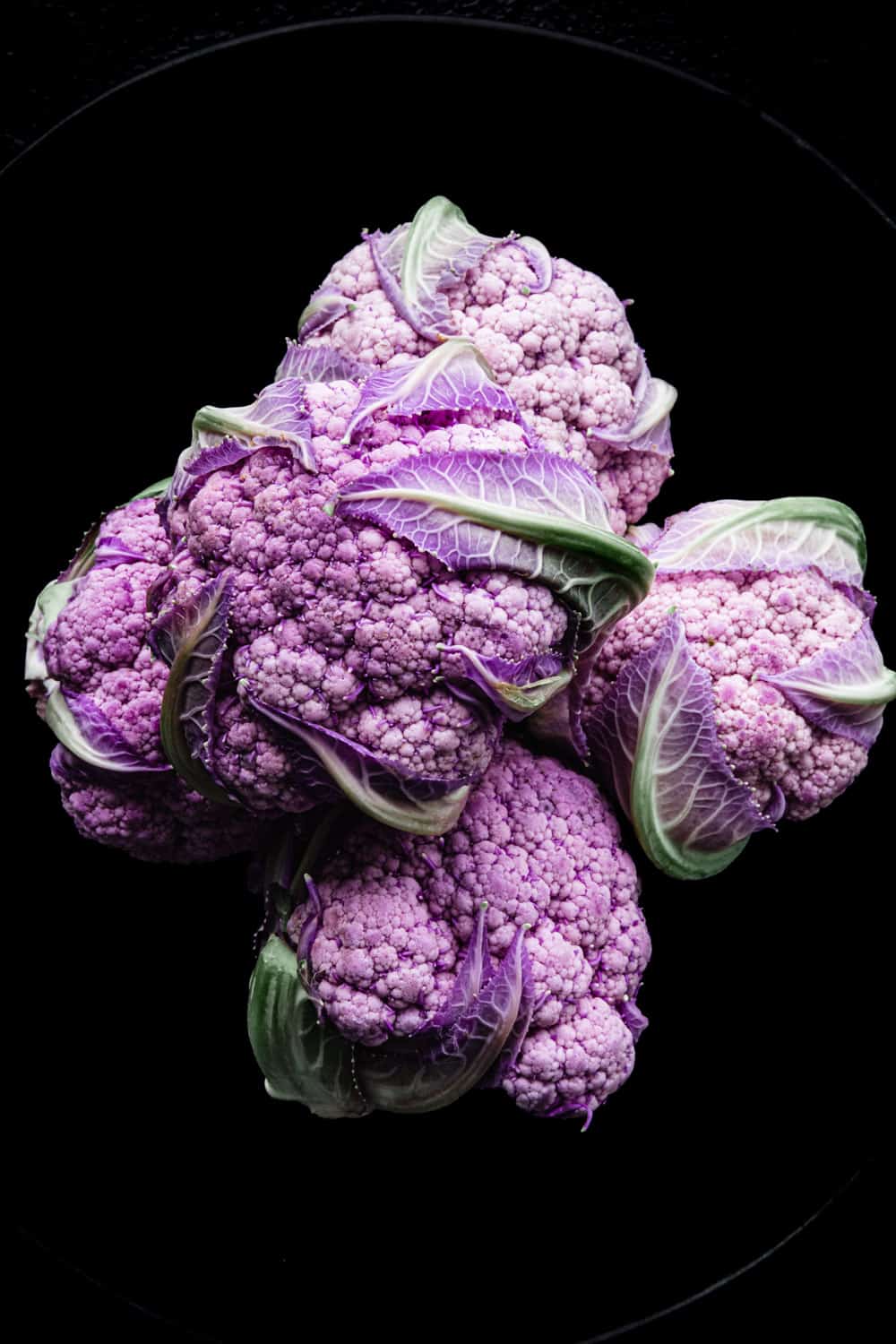
What is Purple Caulilower?
Exactly what is sounds like: a general name for cauliflower whose heads are… purple!
All-encompassing name used for all purple cauliflower varieties – and there’s lots!
Varieties include: Sicilian Violet, Violet Queen, Purple Cape, Mulberry Cauliflower and more.
There’s a wide purple cauliflower range; from light, pastel lavender to violet and dark purple.
Within each variety, there’s a range tone and hue and from subtle to vibrant. The strength of the purple pigment’s vibrancy is directly affected by the amount of sunlight the heads receive during cultivation.
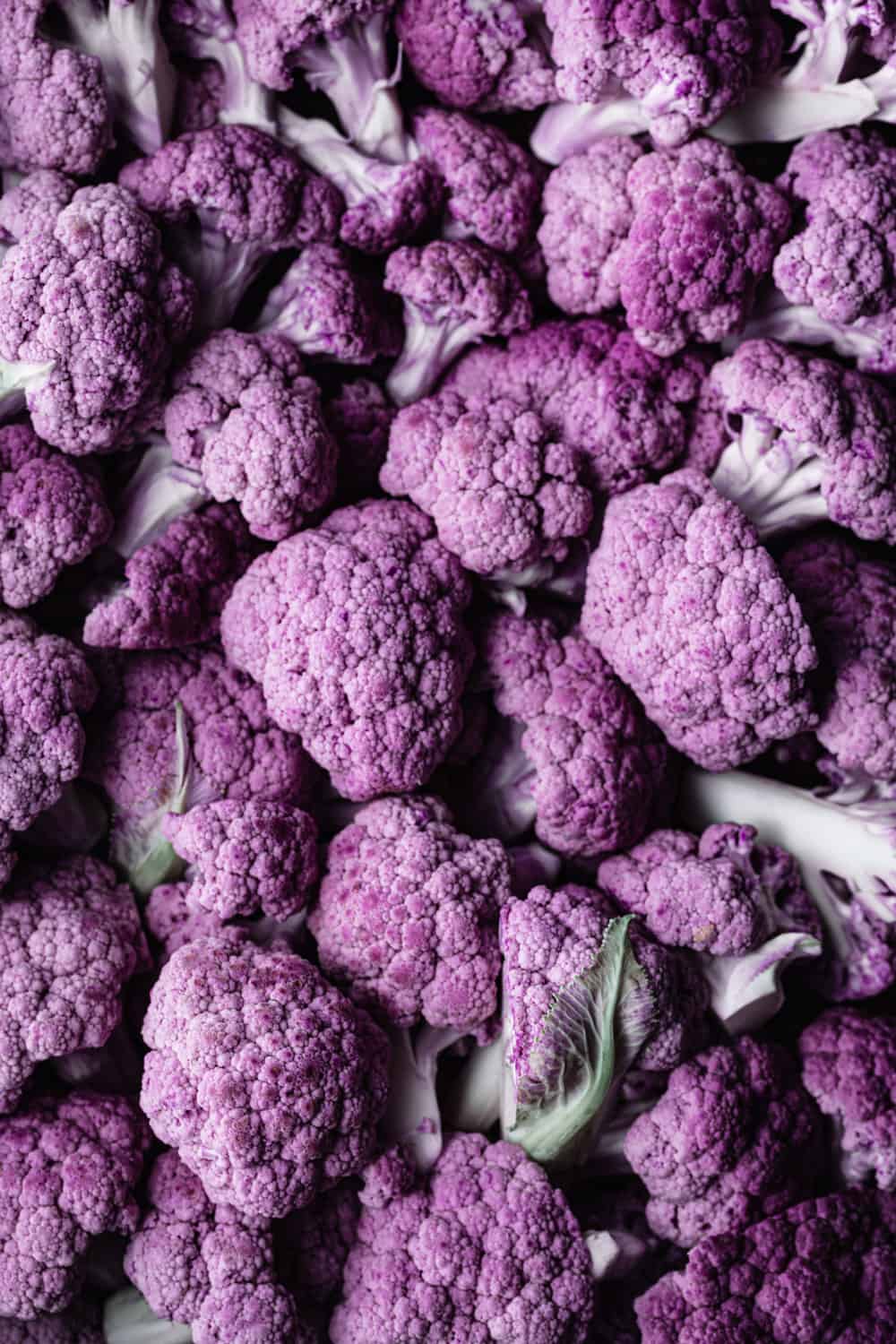
Scientifically & Botanically
Scientific name: Brassica oleracea var. botrytis.
Botanically: hybrid variety in the Brassicaceae family.
Purple cauliflower is a hybrid variety within the Brassicaceae family and botanically classified as Brassica oleracea var. botrytis. Just like all cauliflower varieties in all colors.
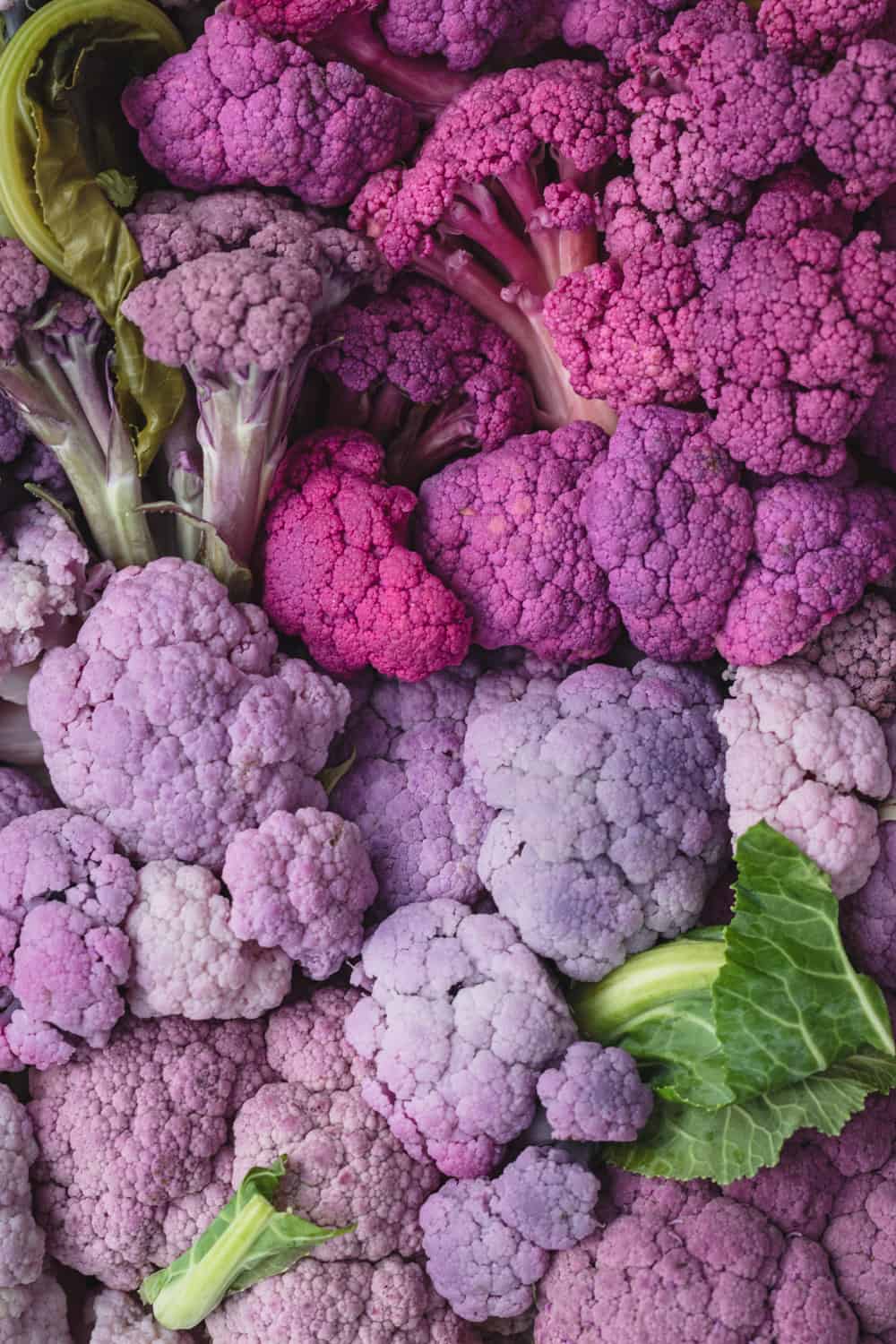
What Makes the Cauliflower Purple?
Purple cauliflower gets its coloring from anthocyanin, a natural plant pigment.
Fruits & veggies gets their colors from natural plant pigments.
There's almost 2,000 known natural plant pigments and about 640 anthocyanins.
Anthocyanins: the natural plant pigments responsible for the colors purple, red, and blue in fruits & veggies.
Examples of other fruits & veggies with anthocyanins: red cabbage, purple potatoes, blueberries, cranberries, purple carrots, red or purple grapes and more.
Anthocyanins are also powerful antioxidants.
Since purple fruits and veggies are rich in anthocyanins, a powered antioxidant, they’re often healthier than their non-purple counterpart!
Purple cauliflower is healthier than its non-purple counterparts!
That’s also true with purple potatoes and more fruits & veggies too.
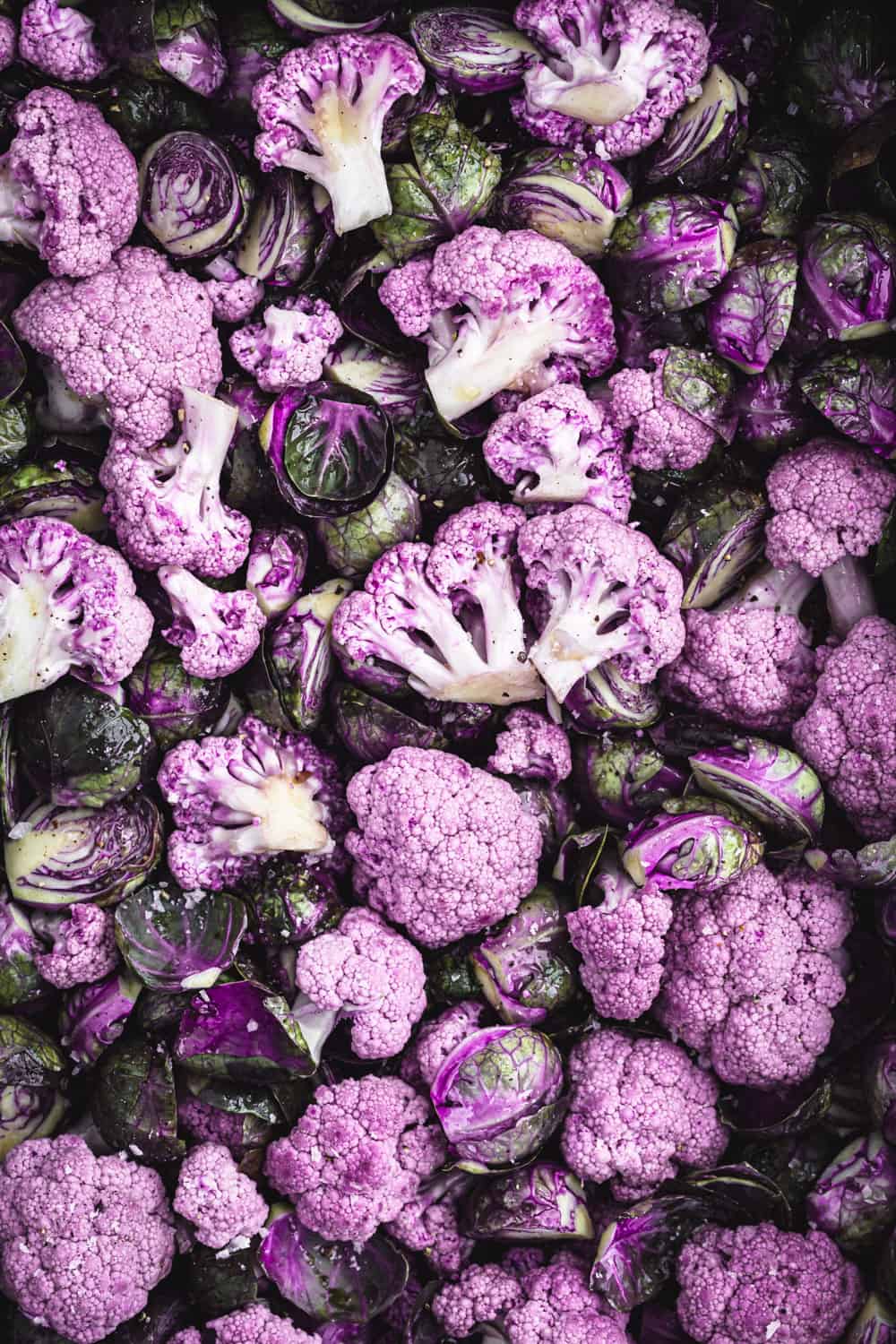
Purple cauliflower varieties have been developed through natural breeding techniques, not through genetic modification.
Note: Purple cauliflower is not genetically modified
Cauliflower Colors
Orange: carotenoids
Green: extra chlorophyll
Purple: anthocyanin
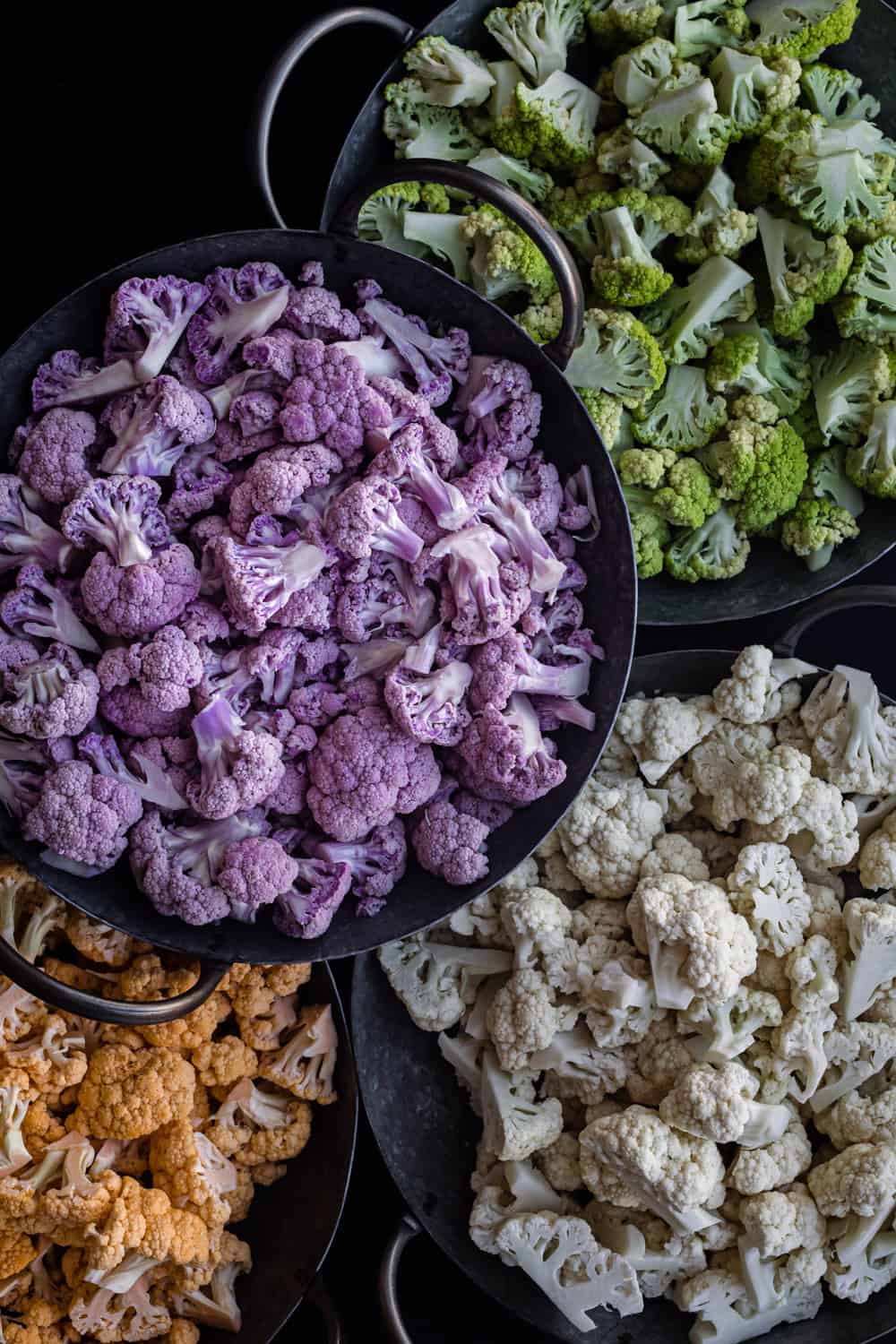
Purple Cauliflower History
Purple cauliflower was developed through years of traditional crossbreeding between heirloom varieties and natural mutations discovered in fields.
Believed to be native to the Northeastern Mediterranean, the original color was white. As time went on, different varieties came about either through cross-pollination, or were developed through a natural mutation and later perfects.
During the Middle Ages, white cauliflower was primarily grown on the island of Cyprus; introduced to Western Europe by the 13th century and to Northern Europe, Asia, and North America by the early 19th century.
In the 20th century, orange cauliflower was discovered in North America. By the late 20th century, purple and green cauliflower varieties were released.
By the early 21st century, orange, green and purple cauliflower varieties became/were prevalent at farmer’s markets and can be found year-round through specialty grocers, wholesalers, and farmer’s markets in North America, Europe, Asia, and Australia.
Today, purple cauliflower is commercially cultivated in South America, North America, and Europe.
Today, there’s hundreds of varieties in various shades of purple, orange, green, and white.
Orange cauliflower, the first color, was seen growing naturally in a field in Canada in the 1970’s. It took years of crossbreeding before it was widely available. Purple was developed through years of traditional crossbreeding between heirloom varieties and natural mutations discovered in fields.
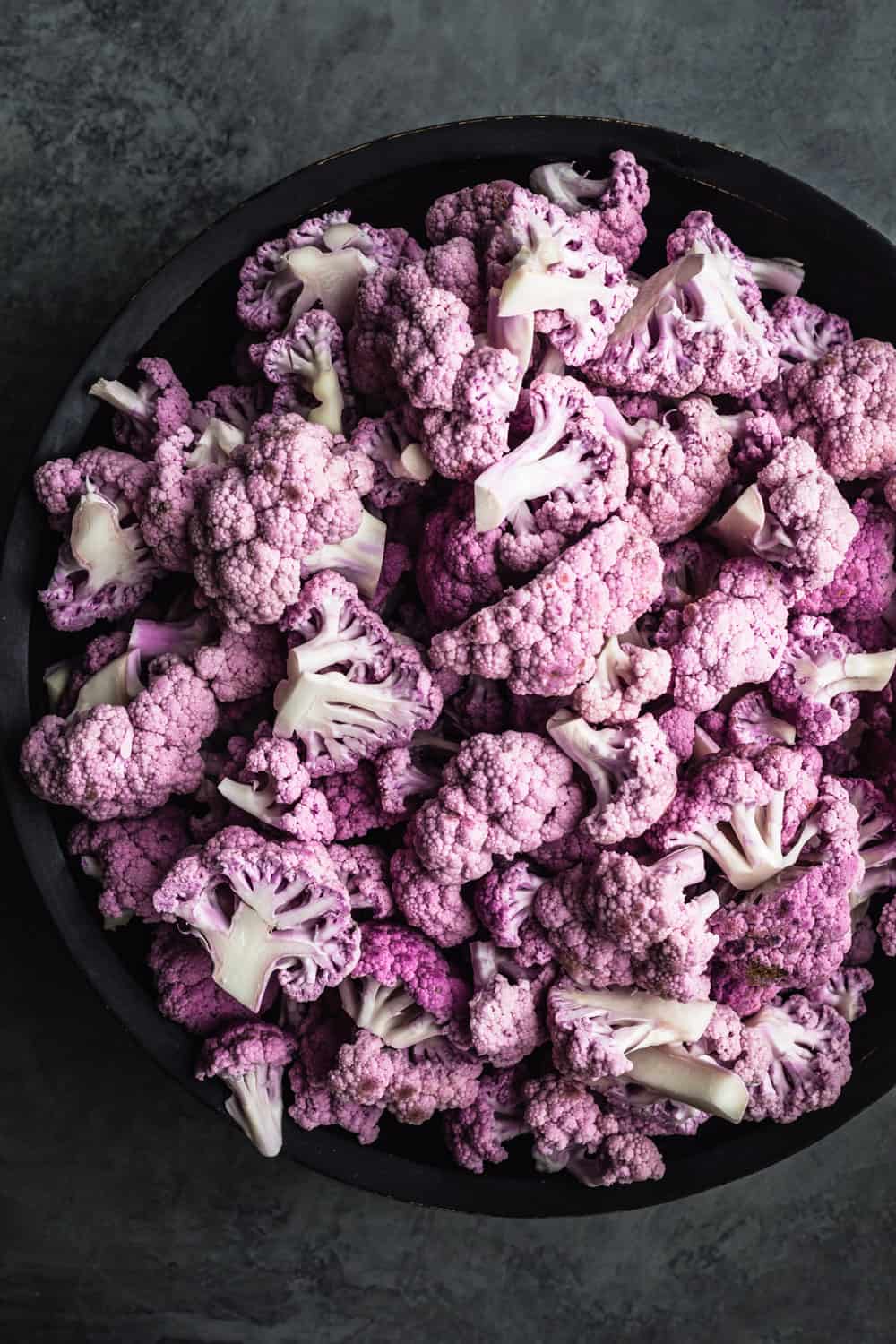
FOOD TASTES BEST GROWN IN ITS SEASON
California is the major cauliflower producing state in the United States and grows about 90% of the supply.
Cauliflower is a cool-season crop. Most types are best as a mid-summer planting for fall harvest. Peak season is September through November.
Purple cauliflower is available year-round, with a peak season in the fall through winter.
Buying & Storing
Where to buy purple
Check out your local farmers market in the fall (Sept-Nov)
Purple cauliflower is commercially cultivated in South America, North America, and Europe.
Find it year-round in North America, Europe, Asia, and Australia in specialty grocers, wholesalers, and farmer’s markets in .
Purple cauliflower is commerically grown year-round in California and easily found in the state.
What to look for
When picking up fresh purple cauliflower, look for densely packed florets without blemishes, with an even purple hue and fresh leaves.
Look for a cauliflower heads that firm and with compact florets. It should feel heavy for its size.
The purple hue can range from subtle to vibrant and light to dark purple. Although tone is not an indication of freshness, uniformity in color is. Avoid ones with a dull color.
Fresh and vibrant leaves indicate a recent harvest. Wilted leaves indicate an older head of cauliflower.
How to Store
Store whole head of cauliflower in a loosely sealed plastic bag in the crisper drawer of the refrigerator for 3-5 days.
Cauliflower needs air circulation - do not completely seal plastic bag.
Tip: If you bought a plastic wrapped head of cauliflower at the supermarket, either loosen the knot or unwrap it completely and transfer to a loosely sealed plastic bag. The tight wrap can trap moisture which promotes rot.
Cooking with Purple Cauliflower
Cook purple cauliflower just like… you would with white cauliflower!
Use purple cauliflower interchangeably with white in any recipe or dish.
Raw, pickled, or cooked, roasted, steamed, sauteed, grilled, mashed, riced, raw and more.
There’s a whole wide cauliflower world out there!
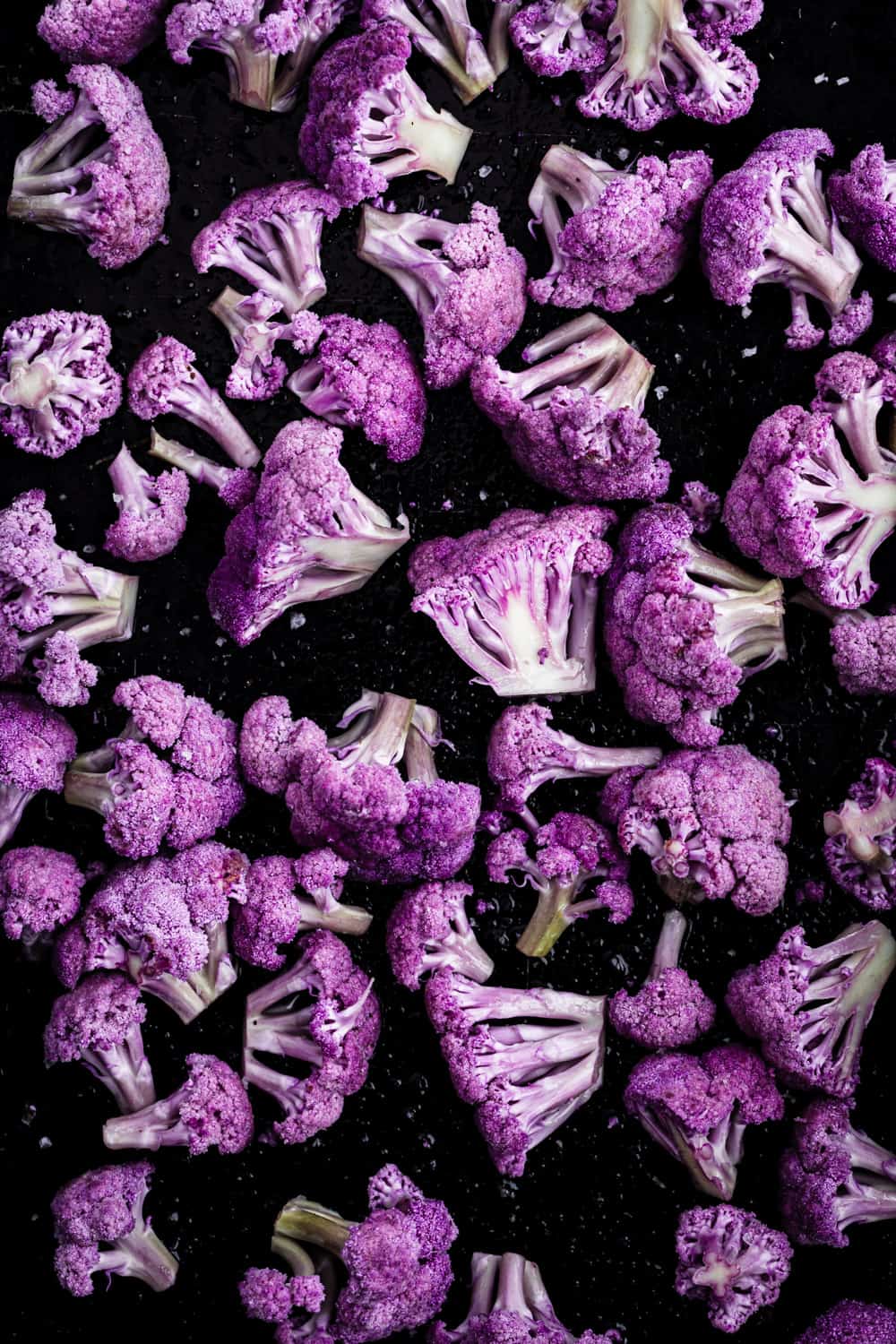
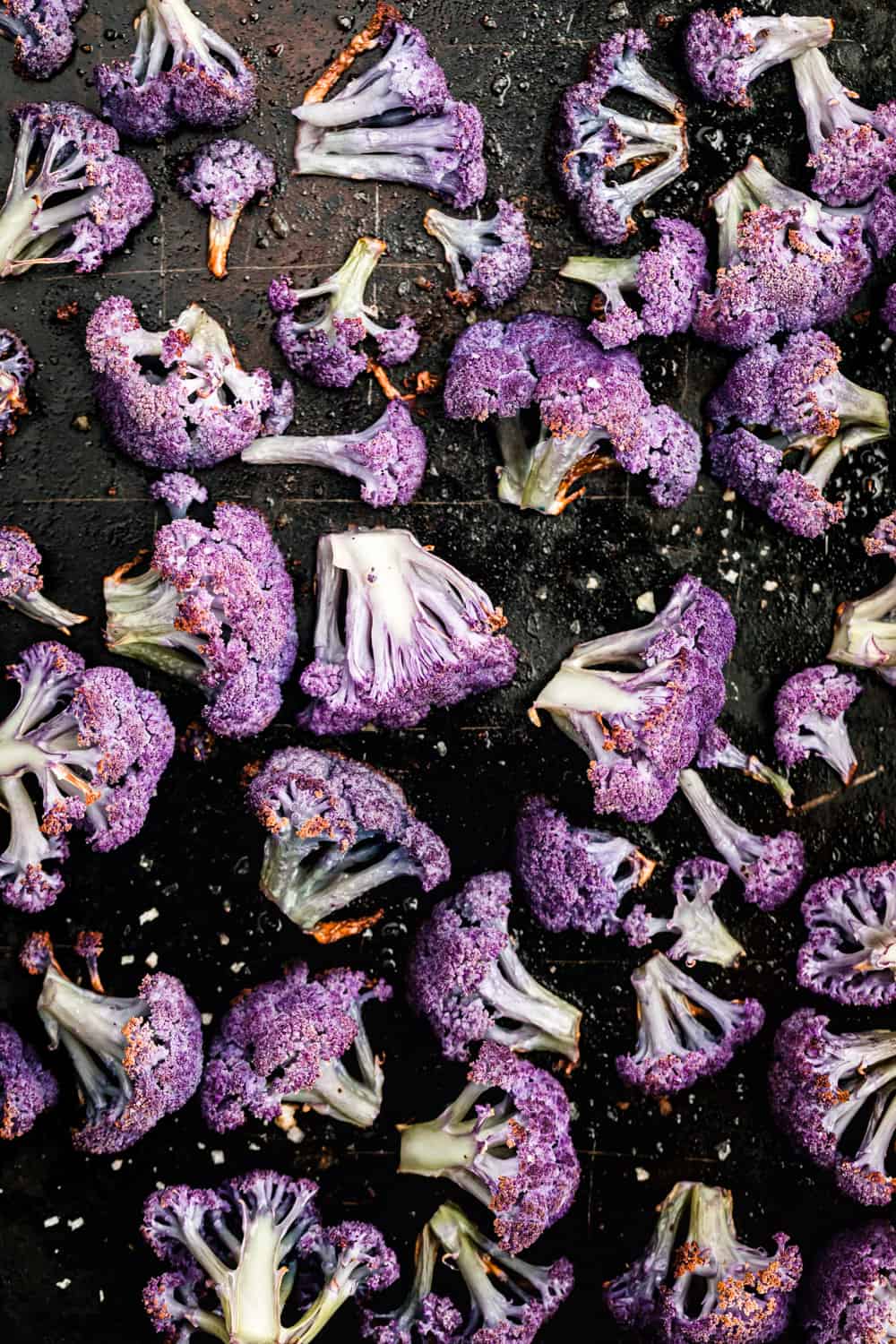
Taste
Purple cauliflower tastes just like… white cauliflower!
The taste of purple cauliflower is mild, sweet and nutty, just like the orange, green and white varieties.
Does it stay purple when cooked?
In my experience, purple cauliflower does not stay very purple when cooked.
Roasting, grilling, and sautéing turns it blue-ish.
Steaming/boiling fades the purple color, dulling it significantly and turns it a bit brown-ish.
How to help retain the vibrant purple color
Pro tip: An ACID, like lemon juice and/or vinegar helps the preserve the purple color stay vibrant!
Try adding a few splashes of lemon juice or vinegar to the pan when cooking or water when boiling purple cauliflower to help preserve its precious color and don’t overcook it!
Pickling purple cauliflower turn the color hot pink-ish.
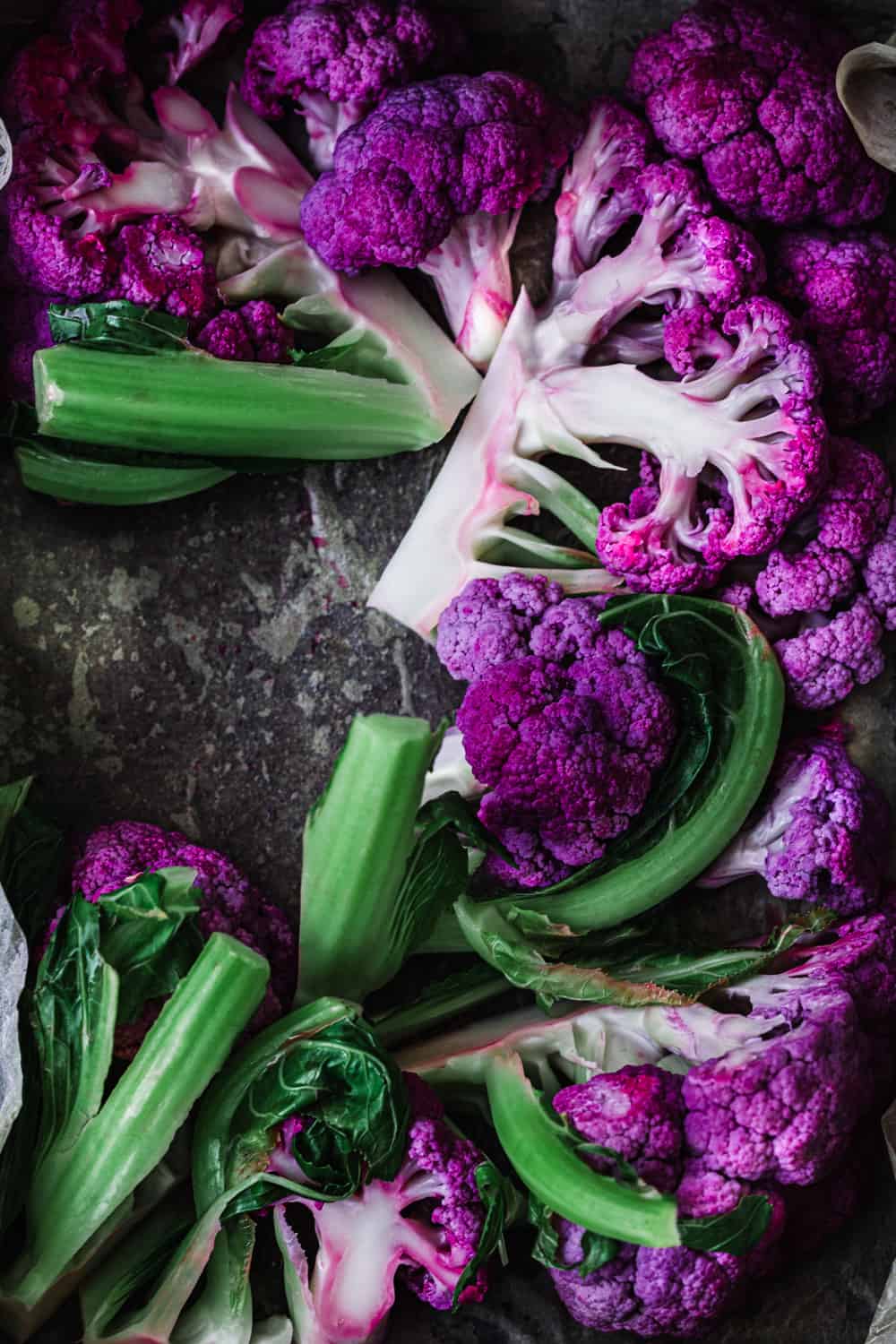
Want more purple produce posts? Check out this post on Purple Potatoes, and Purple Brussels Sprouts.
Enjoy this post? I’d love to hear about it and see it too! Please leave a comment below and share it on Instagram with the tag @DanielaGerson! You can also follow me on Instagram, Facebook, and Pinterest to see more colorfully delicious food and all sorts of awesome adventures!
Let's make waves in the kitchen!
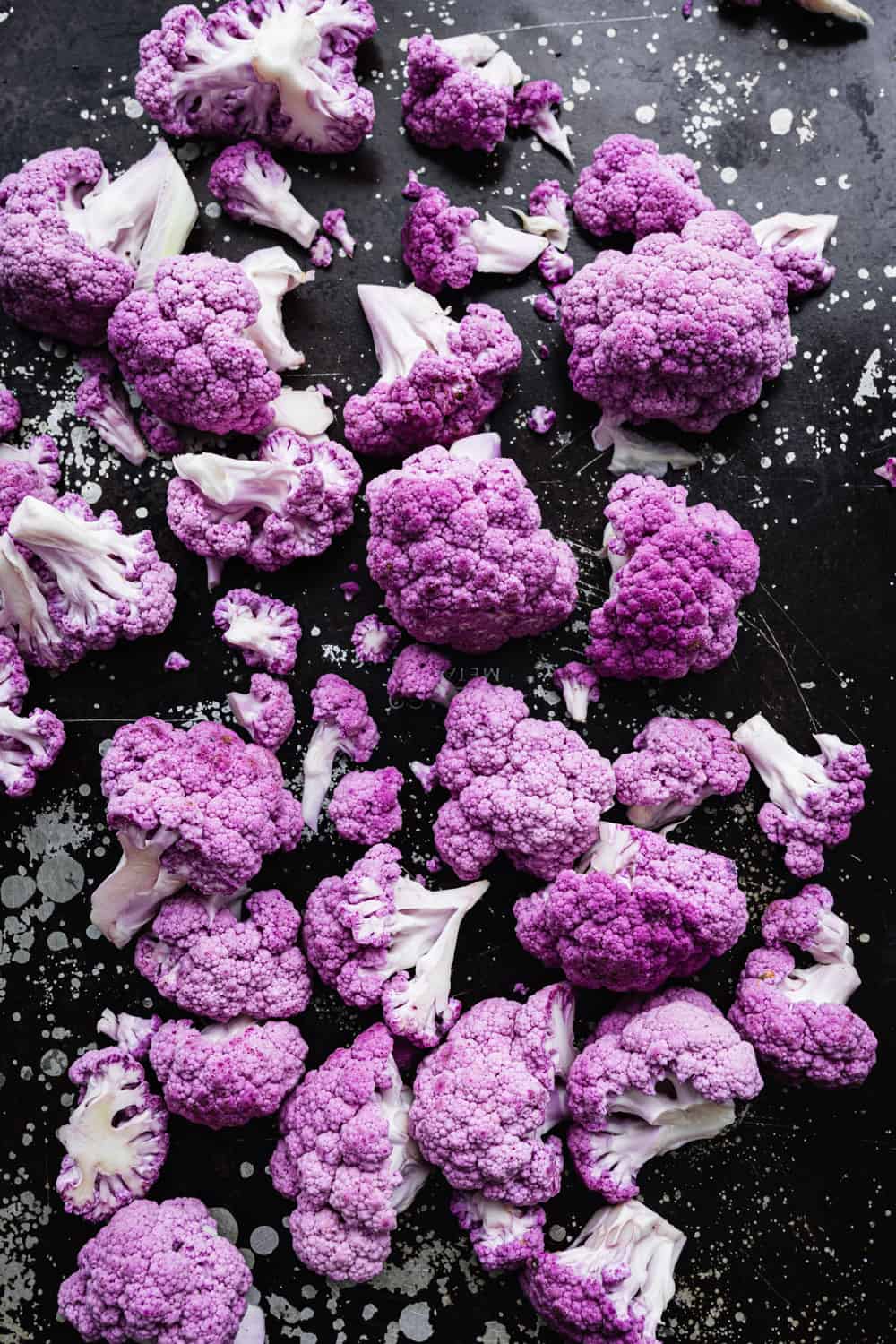



This was a very interesting and informative post! Thank you!
Absolutely pleasure Pattie and so super stoked to hear your enjoyed it!